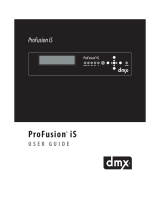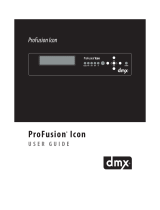Page is loading ...

SAFETY DATA SHEET
According regulation (EC) No. 1907/2006
Page:
1
Compilation date:
04.07.2011
Revision date:
15.03.2013
Revision No:
4
Section 1: Identification of the substance/mixture and of the company/undertaking
1.1. Product identifier
Product name:
CARE-TAB for SCC, Art.-No. MG4215796 (56.00.561,56.00.563)
1.2. Relevant identified uses of the substance or mixture and uses advised against
Use of substance / mixture:
Care-Tab for SelfCooking Center for professional users
1.3. Details of the supplier of the safety data sheet
Company name:
Metos Oy Ab
IAhjonkaarre
FIN-04220 Kerava
Finland
Tel:
++358 204 394246 web: www.metos.com
Fax:
Email: Product manager, [email protected]
Emergency tel:
112
Section 2: Hazards identification
2.1. Classification of the substance or mixture
Classification under CHIP:
Xi: R36/38
Classification under CLP:
* Eye Irrit. 2: H319; Skin Irrit. 2: H315
Most important adverse effects:
Irritating to eyes and skin.
2.2. Label elements
*Label elements under CLP:
Hazard statements:
H315: Causes skin irritation.
H319: Causes serious eye irritation.
Signal words:
Warning
Hazard pictograms:
GHS07: Exclamation mark
Precautionary statements:
P102: Keep out of reach of children.
P101: If medical advice is needed, have product container or label at hand.
P280: Wear protective gloves.
[cont...]

SAFETY DATA SHEET
CARE-TAB for SCC
Page:
2
P302+352: IF ON SKIN: Wash with plenty of soap and water.
P305+351+338: IF IN EYES: Rinse cautiously with water for several minutes. Remove
contact lenses, if present and easy to do. Continue rinsing.
P308+313: IF exposed or concerned: Get medical advice/attention.
Label elements under CHIP:
Hazard symbols:
Irritant.
Risk phrases:
R36/38: Irritating to eyes and skin.
Safety phrases:
S2: Keep out of the reach of children.
S26: In case of contact with eyes, rinse immediately with plenty of water and seek medical
advice.
S24/25: Avoid contact with skin and eyes.
S28: After contact with skin, wash immediately with plenty of water.
S46: If swallowed, seek medical advice immediately and show this container or label.
2.3. Other hazards
PBT:
This substance is not identified as a PBT substance.
Section 3: Composition/information on ingredients
3.2. Mixtures
Hazardous ingredients:
CITRIC ACID
EINECS CAS CHIP Classification CLP Classification Percent
201-069-1 77-92-9 Xi: R36 Eye Irrit. 2: H319 >20%
MALIC ACID - ÄPFELSÄURE
210-514-9 617-48-1 Xi: R36/38 Eye Irrit. 2: H319; Skin Irrit. 2: H315 >20%
ADIPIC ACID
204-673-3 124-04-9 Xi: R36 Eye Irrit. 2: H319 1-5%
Section 4: First aid measures
4.1. Description of first aid measures
Skin contact:
Wash immediately with plenty of soap and water.
Eye contact:
Bathe the eye with running water for 15 minutes. Transfer to hospital for specialist
examination.
Ingestion:
Wash out mouth with water. Do not induce vomiting. Consult a doctor.
[cont...]

SAFETY DATA SHEET
CARE-TAB for SCC
Page:
3
4.2. Most important symptoms and effects, both acute and delayed
Skin contact:
There may be irritation and redness at the site of contact.
Eye contact:
There may be irritation and pain. The eyes may water profusely. The vision may become
blurred.
Ingestion:
There may be soreness and redness of the mouth and throat. Nausea and stomach pain
may occur.
Delayed / immediate effects:
Immediate effects can be expected after short-term exposure.
4.3. Indication of any immediate medical attention and special treatment needed
Section 5: Fire-fighting measures
5.1. Extinguishing media
Extinguishing media:
Suitable extinguishing media for the surrounding fire should be used.
5.2. Special hazards arising from the substance or mixture
5.3. Advice for fire-fighters
Section 6: Accidental release measures
6.1. Personal precautions, protective equipment and emergency procedures
Personal precautions:
Refer to section 8 of SDS for personal protection details.
6.2. Environmental precautions
6.3. Methods and material for containment and cleaning up
Clean-up procedures:
Wash the spillage site with large amounts of water. Refer to section 13 of SDS for suitable
method of disposal.
6.4. Reference to other sections
Section 7: Handling and storage
7.1. Precautions for safe handling
Handling requirements:
Avoid direct contact with the substance.
7.2. Conditions for safe storage, including any incompatibilities
Storage conditions:
Store in cool, well ventilated area. Avoid contact with water or humidity.
Suitable packaging:
Must only be kept in original packaging.
7.3. Specific end use(s)
Section 8: Exposure controls/personal protection
8.1. Control parameters
Workplace exposure limits:
Not applicable.
[cont...]

SAFETY DATA SHEET
CARE-TAB for SCC
Page:
4
8.2. Exposure controls
Respiratory protection:
Respiratory protection not required.
Hand protection:
Protective gloves.
Eye protection:
Safety glasses.
Environmental:
No special requirement.
Section 9: Physical and chemical properties
9.1. Information on basic physical and chemical properties
State:
Solid
Colour:
White
Odour:
Characteristic odour
Oxidising:
Non-oxidising (by EC criteria)
Solubility in water:
Soluble
Relative density:
800 g/l
pH:
2.5 (1%ig)
9.2. Other information
Other information:
Not applicable.
Section 10: Stability and reactivity
10.1. Reactivity
Reactivity:
Stable under recommended transport or storage conditions.
10.2. Chemical stability
Chemical stability:
Stable under normal conditions.
10.3. Possibility of hazardous reactions
Hazardous reactions:
Hazardous reactions will not occur under normal transport or storage conditions.
Decomposition may occur on exposure to conditions or materials listed below.
10.4. Conditions to avoid
Conditions to avoid:
Humidity.
10.5. Incompatible materials
Materials to avoid:
Not applicable.
10.6. Hazardous decomposition products
Haz. decomp. products:
Not applicable.
Section 11: Toxicological information
11.1. Information on toxicological effects
[cont...]

SAFETY DATA SHEET
CARE-TAB for SCC
Page:
5
Toxicity values:
Route Species Test Value Units
Malic acid: ORL RAT LD50 >3200 mg/kg
Citric acid: ORL RAT LD50 6730 mg/kg
Adipic acid: ORL RAT LD50 11000 mg/kg
Symptoms / routes of exposure
Skin contact:
There may be irritation and redness at the site of contact.
Eye contact:
There may be irritation and pain. The eyes may water profusely. The vision may become
blurred.
Ingestion:
There may be soreness and redness of the mouth and throat. Nausea and stomach pain
may occur.
Delayed / immediate effects:
Immediate effects can be expected after short-term exposure.
Section 12: Ecological information
12.1. Toxicity
Ecotoxicity values:
Species Test Value Units
Citric acid: Leuciscus idus 96H LC50 440-706 mg/l
Daphnia magna EC50 85 mg/l
Adipic acid: Pimephales promelas 96H LC50 97 mg/l
12.2. Persistence and degradability
Persistence and degradability:
Biodegradable.
12.3. Bioaccumulative potential
Bioaccumulative potential:
No data available.
12.4. Mobility in soil
Mobility:
Soluble in water.
12.5. Results of PBT and vPvB assessment
PBT identification:
This substance is not identified as a PBT substance.
12.6. Other adverse effects
Section 13: Disposal considerations
13.1. Waste treatment methods
Disposal operations:
Transfer to a suitable container and arrange for collection by specialised disposal company.
Disposal of packaging:
May be reused following decontamination.
NB:
The user's attention is drawn to the possible existence of regional or national regulations
regarding disposal.
[cont...]

SAFETY DATA SHEET
CARE-TAB for SCC
Page:
6
Section 14: Transport information
Transport class:
This product does not require a classification for transport.
Section 15: Regulatory information
15.1. Safety, health and environmental regulations/legislation specific for the substance or mixture
15.2. Chemical Safety Assessment
Chemical safety assessment:
A chemical safety assessment has not been carried out for the substance or the mixture by
the supplier.
Section 16: Other information
Other information
Other information:
This safety data sheet is prepared in accordance with Commission Regulation (EU) No.
1907/2006.
* indicates text in the SDS which has changed since the last revision.
Data references: Safety data sheets from our raw material suppliers
Phrases used in s.2 and 3:
H315: Causes skin irritation.
H319: Causes serious eye irritation.
R36/38: Irritating to eyes and skin.
R36: Irritating to eyes.
Legal disclaimer:
The above information is believed to be correct but does not purport to be all inclusive and
shall be used only as a guide. This company shall not be held liable for any damage resulting
from handling or from contact with the above product.
[final page]
/





